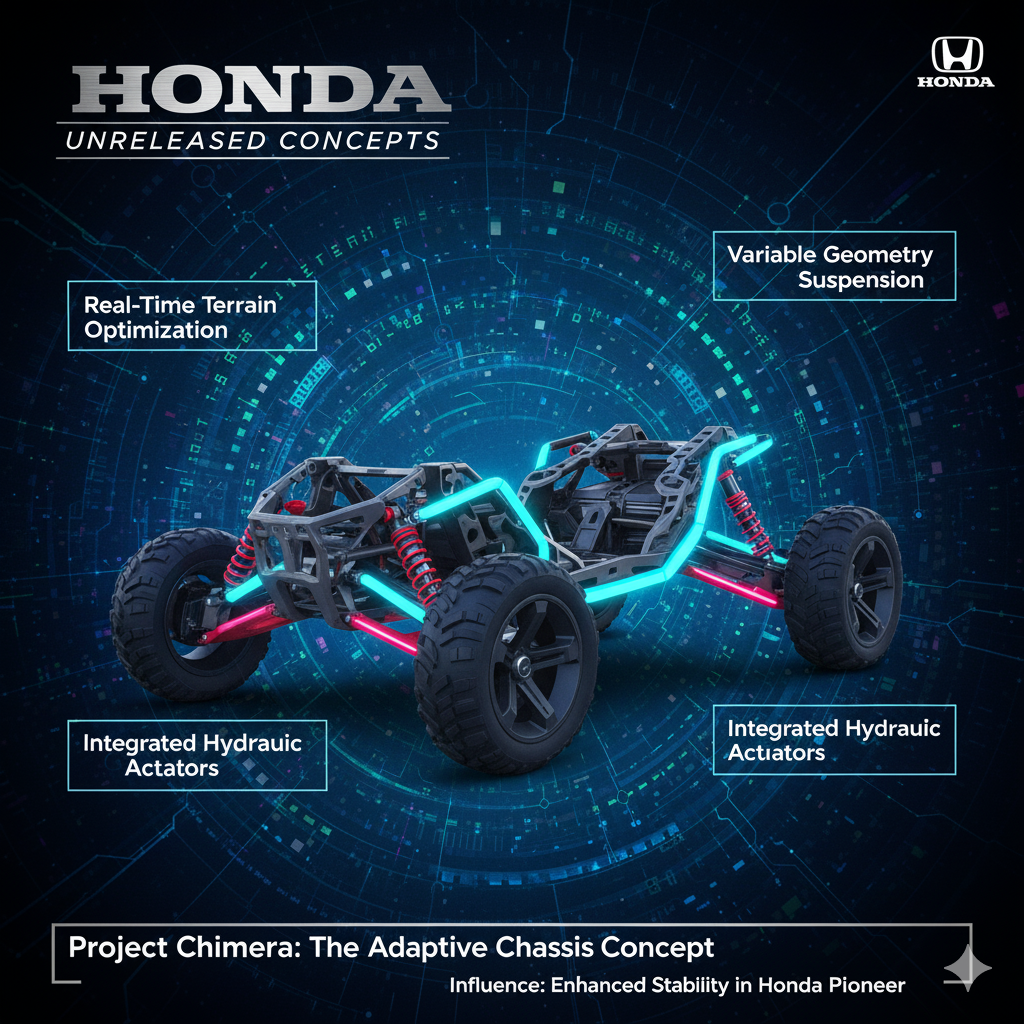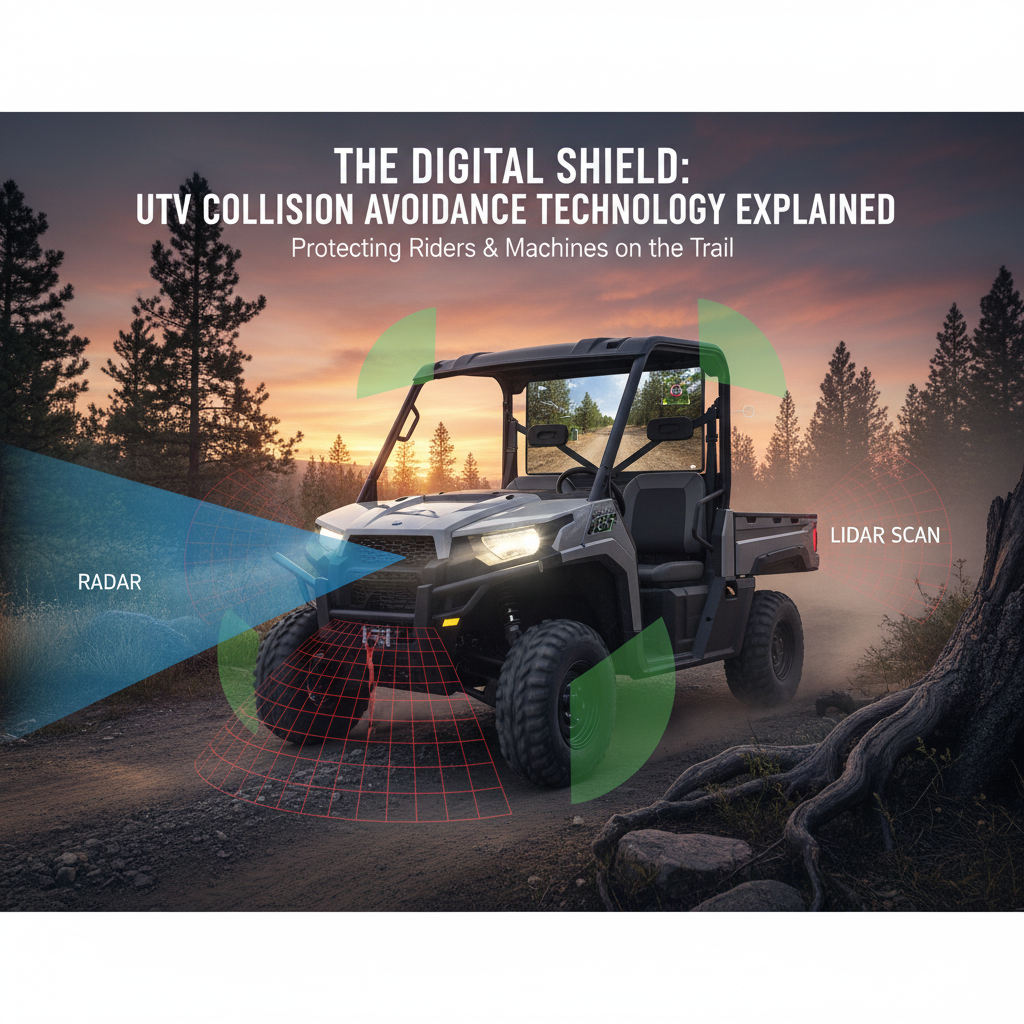Hey, gearheads!
As much as we love the machines we can buy, there’s a special fascination with the ones we can’t.
Every major manufacturer, especially one as innovative as Honda, has a secret vault filled with concept vehicles—radical prototypes, engineering test beds, and design studies that never saw the light of a production line.
These Concept UTVs That Never Launched are the unsung heroes of the powersports world.
They are the proving grounds where engineers test the limits of what’s possible.
Today, we’re going to pull back the curtain and imagine some of the concepts that likely influenced the development of the Honda Pioneer, from its early days to the cutting-edge DCT models.
While Honda is notoriously tight-lipped about its internal concepts, we can infer the existence of key prototypes based on the revolutionary features that did make it into the Pioneer.

The “Big Red 2.0” Prototype: The Hybrid Utility Concept
Before the Pioneer 700 launched, Honda had to decide how to bridge the gap between the original Big Red and a modern UTV.
We can imagine a prototype that was far more radical than the final production model.
- The Concept: A “Big Red 2.0” that was a mild-hybrid UTV. It would have featured a small electric motor integrated into the drivetrain, primarily for low-speed, high-torque work applications.
- Why it Never Launched: The technology was likely too expensive or too complex for the utility market at the time. The market was not yet ready for a hybrid UTV.
- The Pioneer Influence: This concept likely led directly to the development of the DCT transmission. The DCT offers the precise, low-speed control and engine braking that a hybrid system would provide, but using proven, mechanical technology. The lessons learned about power management and torque delivery from this hybrid prototype were crucial for perfecting the DCT.
The “50-Inch Sport” Prototype: The Performance Pioneer
When the Pioneer 500 was launched, its 50-inch width was a huge selling point for trail access.
But Honda’s engineers, known for their racing heritage, must have toyed with a high-performance version of this compact platform.

- The Concept: A 50-inch wide UTV with a high-revving, sport-quad-derived engine (perhaps a detuned 450cc race engine) and long-travel, fully adjustable suspension. It would have been a direct competitor to the sport side-by-sides, but with the narrow footprint of a utility machine.
- Why it Never Launched: Honda’s core philosophy for the Pioneer line is Utility First. A pure sport model would have diluted the brand’s message of reliability and work-ready capability.
- The Pioneer Influence: This concept’s focus on suspension and handling directly influenced the later Pioneer 1000 Trail Edition models. The need for better damping and control in a high-speed environment was proven in the prototype stage, leading to the use of upgraded shocks and advanced suspension geometry in the production models.
The “Transformer” Prototype: The Ultimate Modularity Test
The Pioneer’s Convertible Rear Seating (in the 700 and 1000-5 models) is a hallmark of Honda’s innovation.
But imagine the extreme concepts that led to this feature.
- The Concept: A prototype we can call the “Transformer” UTV, featuring an electrically-actuated, fully reconfigurable cab and bed. The entire rear section could slide, lift, or fold to create a flat deck, a dump bed, or a full passenger compartment, all at the touch of a button.
- Why it Never Launched: Complexity and reliability. All those moving parts, motors, and sensors would have added massive weight and a huge potential for failure in a muddy, harsh environment. Honda chose the simpler, more reliable, and lighter manual folding seat system for production.

- The Pioneer Influence: The “Transformer” concept taught Honda the value of simplicity in modularity. The production Pioneer’s system is a perfect example of elegant engineering: a simple, robust mechanical solution that achieves the same goal as a complex electronic one, perfectly aligning with the Pioneer’s reputation for unwavering reliability.
The “Autonomous Workhorse” Prototype: The Early AI Test
Long before the 2030 predictions, Honda was likely experimenting with autonomous features for the commercial and agricultural sectors.
- The Concept: An early Pioneer prototype equipped with basic GPS and sensor arrays to perform simple, repetitive tasks like mowing a field or following a fence line without driver input.
- Why it Never Launched: The cost of the sensor package and the regulatory hurdles were too high. Furthermore, the early systems lacked the precision and reliability needed for commercial use.
- The Pioneer Influence: This early work in autonomy directly paved the way for modern features like speed limiters, selectable drive modes, and advanced traction control systems. The data gathered from these autonomous prototypes helped Honda refine the electronic control unit (ECU) programming that manages the Pioneer’s engine and transmission today.
The secret history of Honda’s unlaunched UTV concepts is a story of engineering discipline.

These prototypes were not failures; they were essential learning tools.
They allowed Honda to test radical ideas, discard the overly complex or unreliable ones, and distill the best, most robust innovations into the production Honda Pioneer.
The next time you’re out on the trail, remember that the reliability and clever design of your Pioneer is the result of countless hours of testing on machines that never made it to the showroom floor.

And that, my friends, is why the Pioneer is truly a machine built for the long haul.
References & Further Reading
- The Role of Concept Vehicles in Automotive Design [1]
- Honda’s Philosophy of Engineering Reliability [2]
- Honda Pioneer Convertible Seating Explained [3]
- UTV Concept Designs and Prototypes [4]




